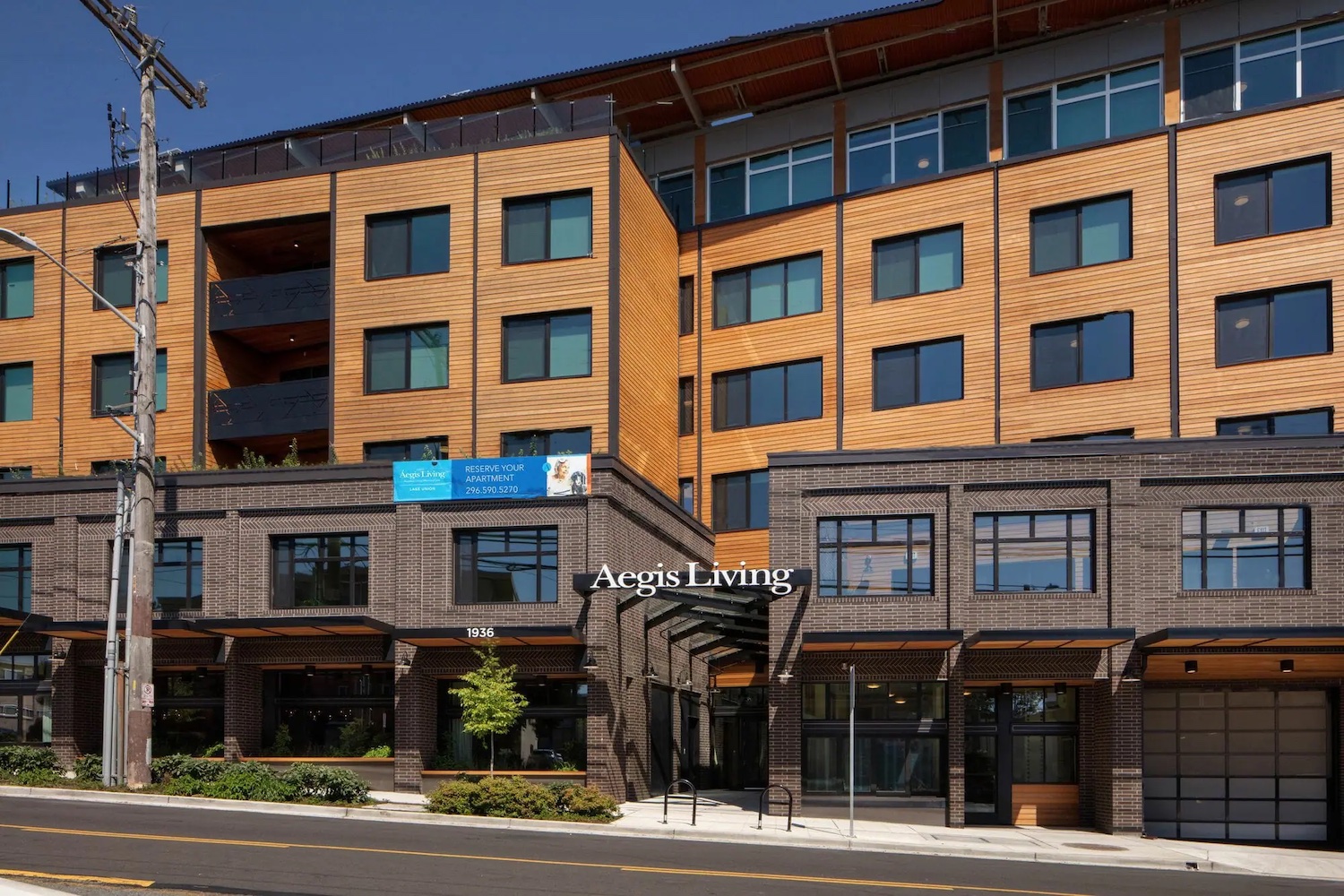Aegis Living Lake Union in Seattle is the world’s first assisted living community designed to meet the rigorous Living Building Challenge certification. Completed in 2022, the Ankrom Moisan-designed, 70,000 sf-building is fully electrified. All commercial dryers, domestic hot water, and kitchen equipment are powered by electricity in lieu of gas, which reduces the facility’s carbon footprint.
The community will source power through an onsite solar array and an offsite solar energy farm. Key energy reduction measures include improved exterior insulation, triple pane windows, heat recovery ventilation, heat pump heating and cooling, LED lighting and lighting control sensors, and installation of all high-efficiency appliances.
The building provides 79 living units, including a mix of studio and one-bedroom options with some apartments dedicated to memory care. Amenities include a spa/wellness center with a salon, massage suite, and fitness center. A variety of gathering spaces are available for residents to spend time with family, friends, and neighbors, including an onsite cinema and sky lounge terrace with views of Lake Union.
The aesthetics and environmentalism of Aegis Living Lake Union were inspired by the historic rowing clubs and culture of the area. The exterior consists of natural materials including lapped cedar siding and rough brick, and the surrounding landscaping has been thoughtfully curated to consider biodiversity and rainfall. The pattern of cedar cladding on the north side of the building was designed to evoke the image of oars through water, while the unique steel pattern entry canopy echoes the rowing shell and the shape of the oars.
The top-level roof overhang was extended to create additional roof area to accommodate more rooftop solar panels. These strong shapes and patterns can be seen in the exterior brickwork and entry canopy and continue into the interior of the building.
The lobby presents a tribute to the 1936 University of Washington men’s rowing team that took gold at the Berlin Olympics. An original Pocock racing shell is suspended from the sustainably sourced wood ceiling—defined by a geometric composition suggesting rowing cadence and waves. Nature is also frequently alluded to in many details. Biophilic principles are evidenced through natural light spilling through wide windows, and a greenspace and watercourse offering peace and mindfulness via patterns in the carpet, the shape of the lighting fixtures, and the art adorning the walls.
On the building team:
Owner and/or developer: Aegis Senior Living Communities, LLC
Design architect: Ankrom Moisan
Architect of record: Ankrom Moisan
MEP engineer: PAE Engineers
Structural engineer: Bykonen Carter Quinn
General contractor/construction manager: Absher Construction
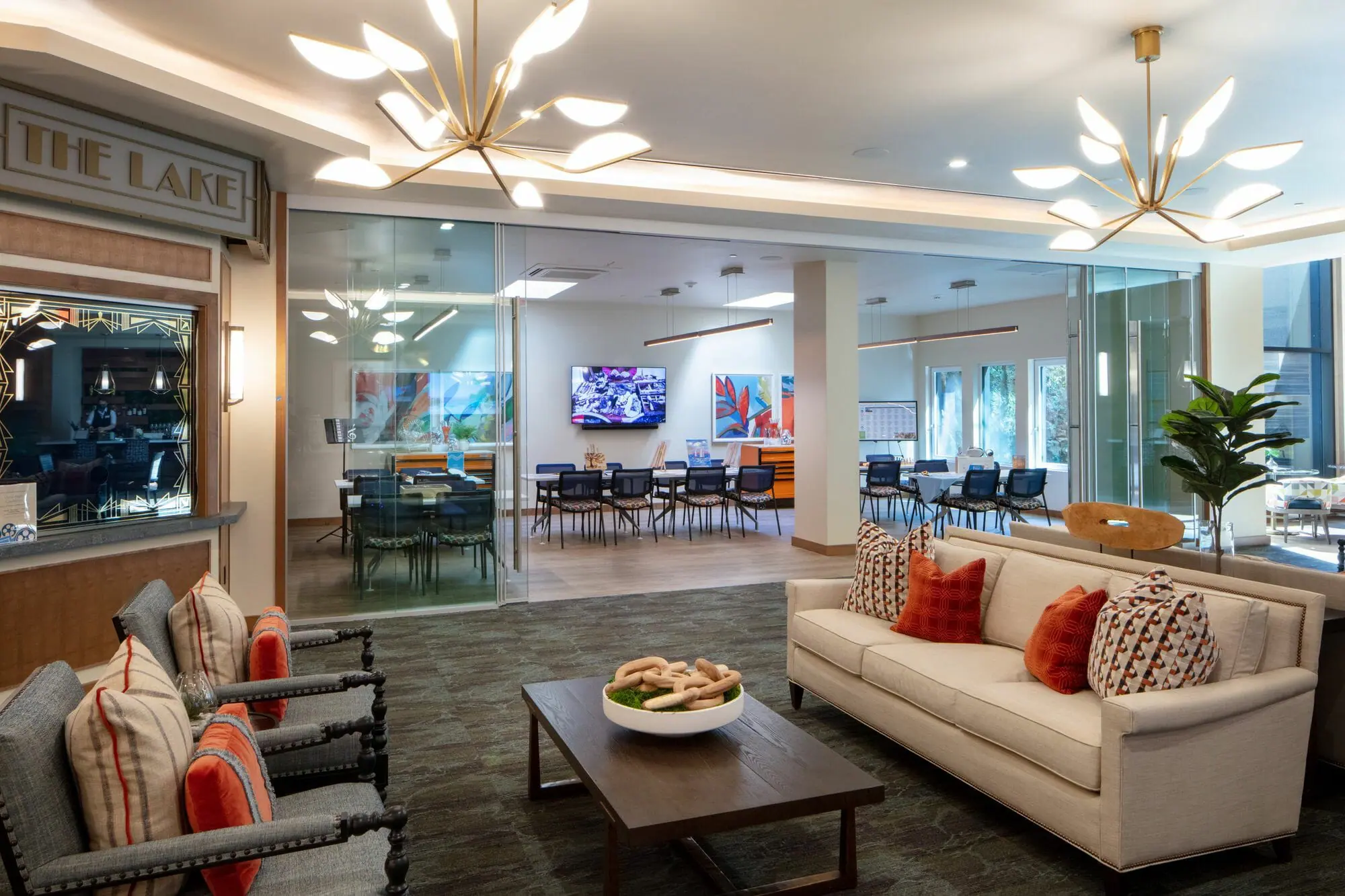
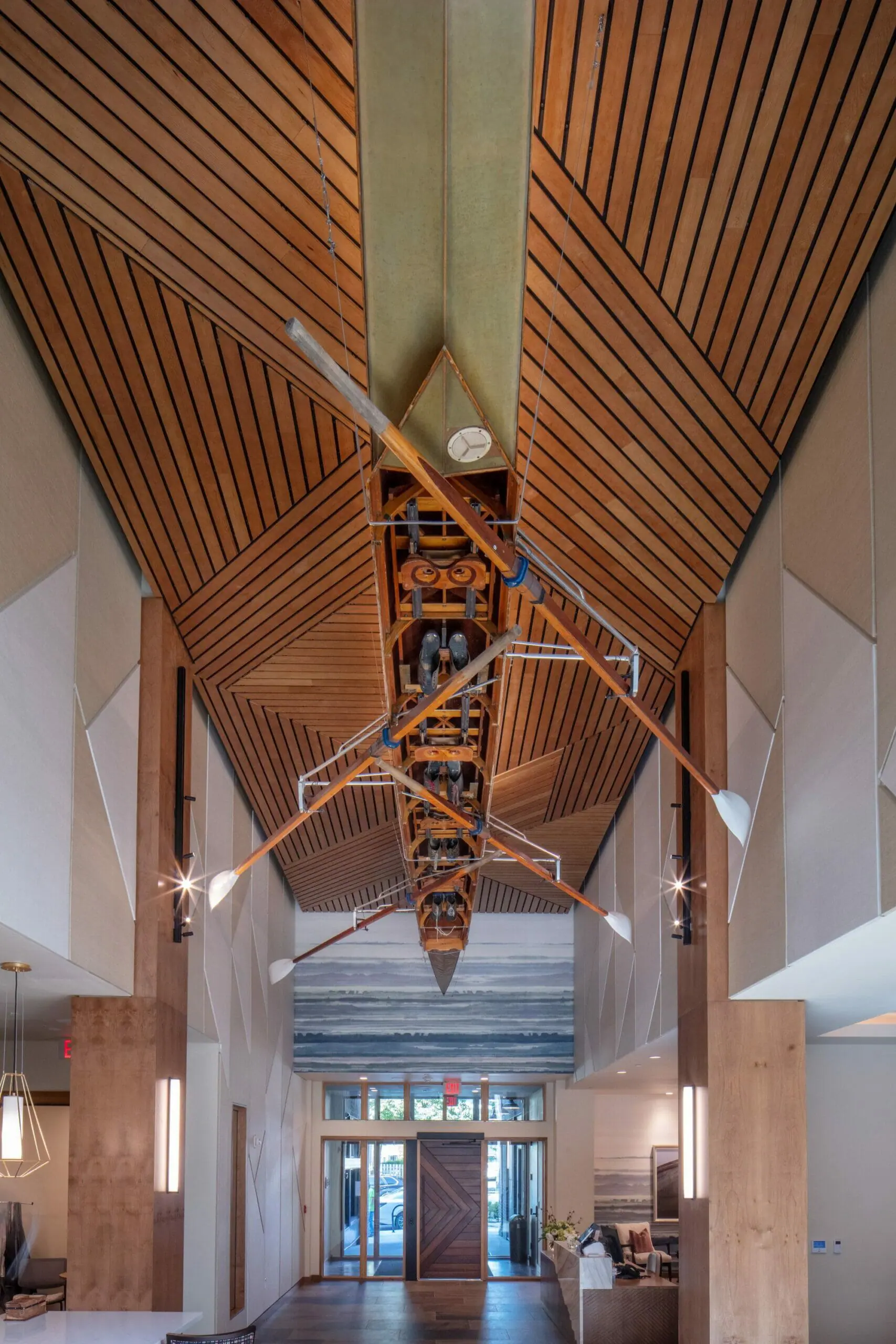
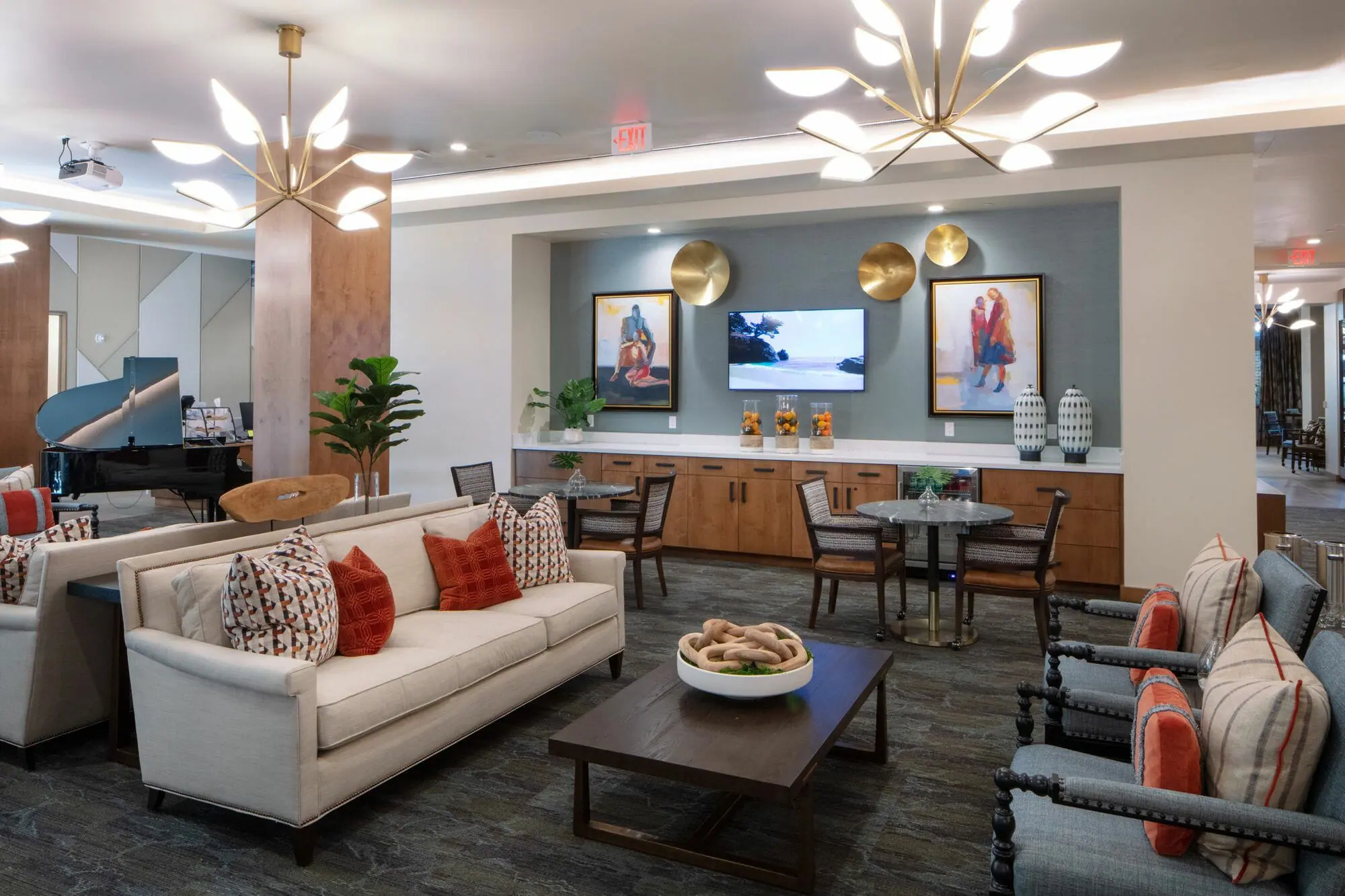

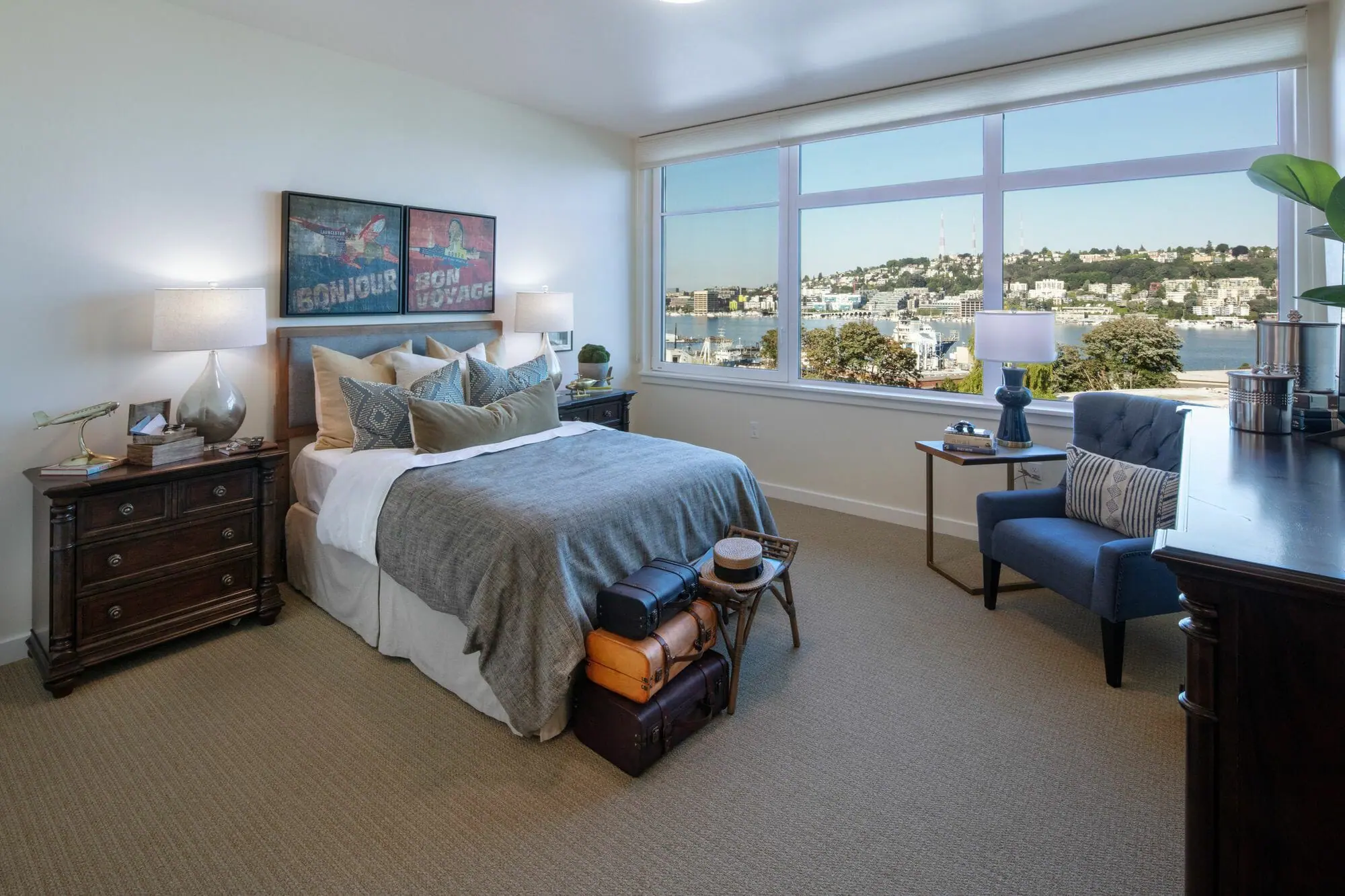
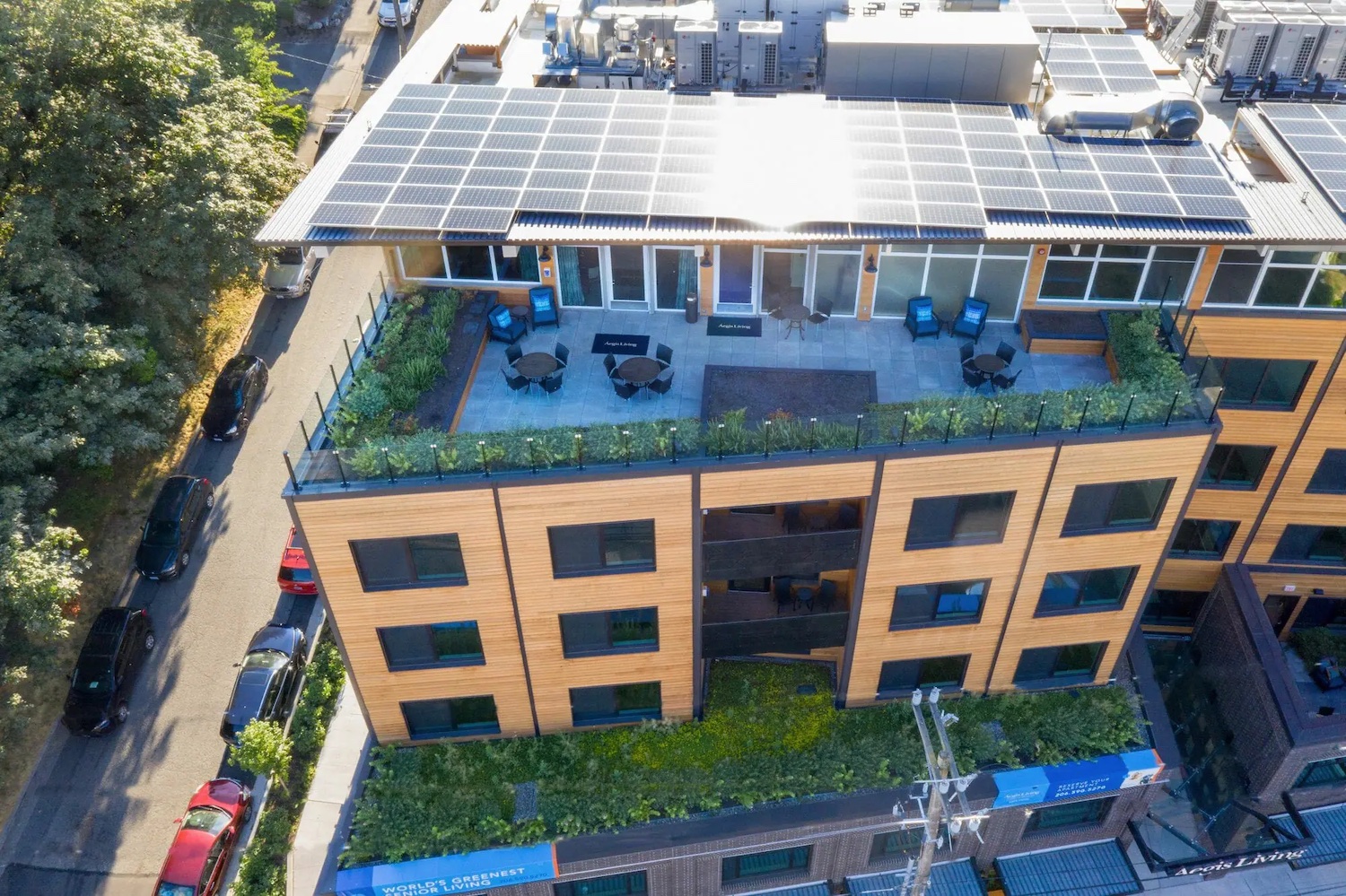
Related Stories
| Jul 18, 2014
Top Engineering/Architecture Firms [2014 Giants 300 Report]
Jacobs, AECOM, Parsons Brinckerhoff top Building Design+Construction's 2014 ranking of the largest engineering/architecture firms in the United States.
| Jul 18, 2014
Top Engineering Firms [2014 Giants 300 Report]
Fluor, Arup, Day & Zimmermann top Building Design+Construction's 2014 ranking of the largest engineering firms in the United States.
| Jul 18, 2014
Top Architecture Firms [2014 Giants 300 Report]
Gensler, Perkins+Will, NBBJ top Building Design+Construction's 2014 ranking of the largest architecture firms in the United States.
| Jul 18, 2014
2014 Giants 300 Report
Building Design+Construction magazine's annual ranking the nation's largest architecture, engineering, and construction firms in the U.S.
| Jul 7, 2014
7 emerging design trends in brick buildings
From wild architectural shapes to unique color blends and pattern arrangements, these projects demonstrate the design possibilities of brick.
| Jul 2, 2014
Emerging trends in commercial flooring
Rectangular tiles, digital graphic applications, the resurgence of terrazzo, and product transparency headline today’s commercial flooring trends.
| Jun 30, 2014
Research finds continued growth of design-build throughout United States
New research findings indicate that for the first time more than half of projects above $10 million are being completed through design-build project delivery.
| Jun 18, 2014
Arup uses 3D printing to fabricate one-of-a-kind structural steel components
The firm's research shows that 3D printing has the potential to reduce costs, cut waste, and slash the carbon footprint of the construction sector.
| Jun 12, 2014
Austrian university develops 'inflatable' concrete dome method
Constructing a concrete dome is a costly process, but this may change soon. A team from the Vienna University of Technology has developed a method that allows concrete domes to form with the use of air and steel cables instead of expensive, timber supporting structures.
| May 29, 2014
7 cost-effective ways to make U.S. infrastructure more resilient
Moving critical elements to higher ground and designing for longer lifespans are just some of the ways cities and governments can make infrastructure more resilient to natural disasters and climate change, writes Richard Cavallaro, President of Skanska USA Civil.



